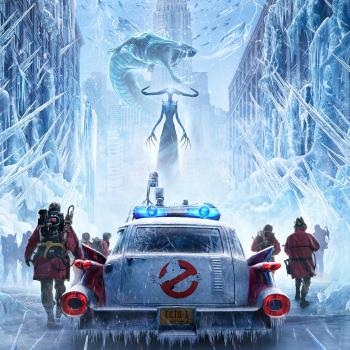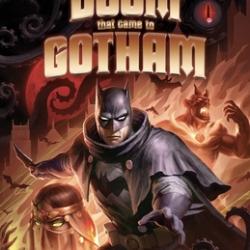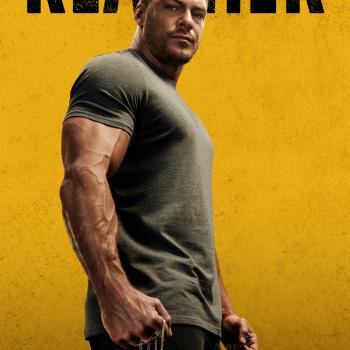Review of The Hunger Games: Catching Fire, Directed by Francis Lawrence
It is distantly possible that you don’t know what The Hunger Games is. If, for example, you a) live in a cave, b) are not a teenage girl, c) think young adult fantasy fiction is not suitable mainstream entertainment or, d) all of the above. Barring that improbable combination, you’re probably familiar with Katniss Everdeen and her battle for survival in the annual Hunger Games held by the tyrannical Capitol to keep the restive districts under its thumb—because there are 50 bazillion copies of The Hunger Games trilogy in print and the first movie is the 14th highest grossing film at the U.S. box office, ever.
I previously reviewed the trilogy of books (warning: major spoilers in that review) by Susan Collins over at Books and Culture. Suffice to say, the books are fast-paced thrillers that somehow wedge in some political commentary (cliffnote: fascism is bad) and media critique. The political commentary takes center stage for much of Catching Fire, the second film in the franchise. We see much more of the Capitol, the president (played by Donald Sutherland), the outlying districts, and the stirrings of rebellion. This part of the movie is well done—much more well done than in the book on which it is based. (In that respect, The Hunger Games movies continue the trend of the Harry Potter franchise: of big-budget movies improving on the pulp novels from which they are derived.)
There is an oddity here. Catching Fire is more or less a political thriller for much of its running length, showing the evolution of Katniss into a symbol of rebellion against the Capitol. I love political thrillers. But Catching Fire is being marketed and sold as a blockbuster action flick when there is almost no action in the first hour and a half of the film. Somehow the filmmakers have tricked audiences into watching political drama, thinking it’s action—and they’re going to get away with it because the brand is so strong. You have to admire their chutzpah. And, yes, the action of the final hour delivers the goods.
The other oddity is that as political drama, Catching Fire is entirely conventional and old-fashioned. It is a story of noble, honest, hard-working, everyday folk discovering the courage to resist fascist tyranny. There’s no real complexity in the political situation, no mistaking who the good guys and bad guys are. Catching Fire is the newest and most superfluous World War II propaganda movie ever made.
Because of its open old-fashionedness, I loved it. This is a straightforward tale of good versus evil, of fighting against injustice, of teamwork and courage and loyalty. Jennifer Lawrence, playing Katniss, has perfected the art of reacting with shock, fear, pain, and sorrow to the carnage around her, and through her eyes we keep our humanity amidst the bloodshed. That makes this movie, rated PG-13, intense and even wrenching to watch. Though less graphically bloody than other movies of this type, it feels more violent because of how the characters react to it. Remember watching Bruce Willis walk over broken glass in the original Die Hard? That’s how much of the last hour of Catching Fire feels.
Of course, the old-fashioned heroism of Catching Fire is mere set up for an epic act of deconstruction in the final book, Mockingjay (being made into two films, of course)—which may resonate more with our more cynical, distrusting age. But more on that next year, when Mockingjay Part I comes out.
Everything about Catching Fire is better, slicker, and smoother than its predecessor. It currently has a 94 percent ‘fresh’ rating on RottenTomatoes.com, which seems about right. This is one of the best-packaged movies of the year. The special effects, barely respectable in The Hunger Games, are here appropriately amazing. We get grand vistas of the fascist Capitol skyline, poison fog, evil monkeys, a tsunami, and an electric denouement. The script manages to weave in just about everything from the source material without it feeling cluttered. And half the movie is shot in close-up of Jennifer Lawrence’s face, putting her acting front and center. And she is quickly becoming one of the best actors working today.
There is one theme from the books that I wish got more emphasis in the movies. Because the Games are televised, all of Katniss’ life is public. She is compelled to live out every waking moment before the cameras. The distinction between life and performance vanishes, and Katniss herself can no longer distinguish between what she feels and what she wants the audience to think she feels. The books heavily emphasize the life-as-performance trope. The message seems to be that Katniss is an image of what we become when our lives are entirely pervaded by social media, when every moment is Tweeted, Instagrammed, posted, and shared. The first film ignored this theme entirely. The second gestures at it in a few early scenes—but once the Games begin it is shunted aside.
I confess I have mixed feelings about seeing the final installments of the Hunger Games movies. Without spoiling too much, suffice to say that it does not end as a straightforward good-versus-evil epic. Catching Fire has a grim and melancholy air to it; Mockingjay, if it stays true to the book, will only grow more bitter, cynical, and resentful. How the filmmakers will turn that story into blockbuster fare is beyond me. This year they’ve tricked audiences into watching political drama under the guise of young adult fantasy action. Next year they have to sell a war epic that is actually an existentialist art film. Good luck.












